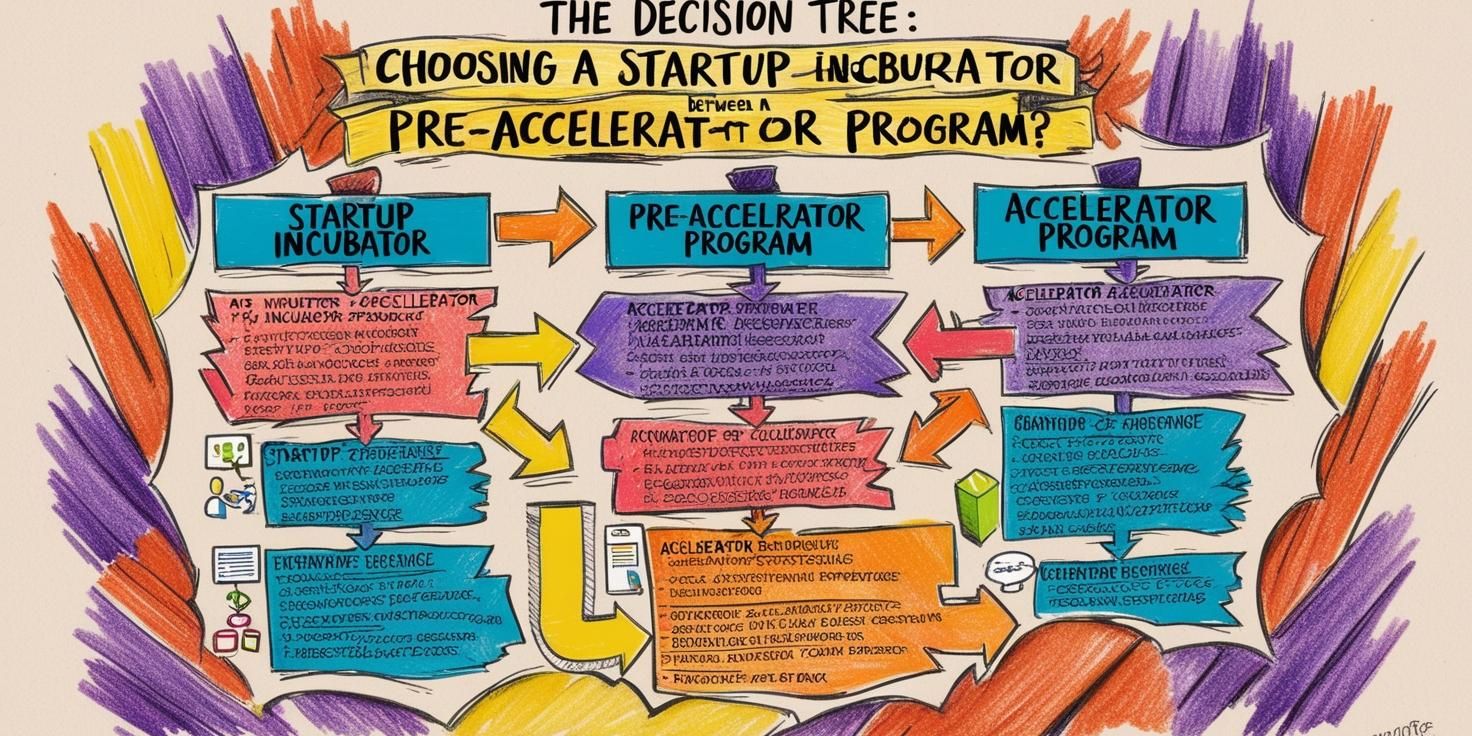Which Startup Program is Best for You? Incubator, Pre-Accelerator, or Accelerator? 🔍
Master

Key Differences: Startup Incubator vs. Pre-Accelerator vs. Accelerator
Startup incubators, pre-accelerators, and accelerators are all programs designed to support startups, but they differ in their purpose, structure, and the stage of business they target. Here’s a detailed comparison:
1. Startup Incubator
Purpose:
• Focuses on nurturing early-stage ideas or startups with long-term support to help them grow into sustainable businesses.
Target Audience:
• Entrepreneurs with a raw idea or an early-stage startup that needs guidance in building its foundation.
Key Features:
• Provides office space, mentorship, and resources like internet, legal, or accounting services.
• Helps with idea validation and initial business development.
• Does not typically provide funding but may connect startups with investors.
Duration:
• Flexible, ranging from several months to a few years.
Stage of Startup:
• Idea stage or early-stage startups with no MVP or business model yet.
Output:
• A validated business idea or early prototype, ready to move into further development or funding stages.
Example Programs:
• Y Combinator’s Startup School (as a virtual incubator).
• Local government or university-led incubators.
2. Pre-Accelerator
Purpose:
• Prepares early-stage startups for an accelerator program or the initial stages of launching their business.
Target Audience:
• Entrepreneurs with a validated idea or prototype but who need help refining their business model and preparing for scaling or pitching.
Key Features:
• Focus on idea validation, business model development, and customer discovery.
• Helps startups get “accelerator-ready” by building foundational skills.
• Often includes workshops, training sessions, and mentorship.
Duration:
• Short-term, typically 6-12 weeks.
Stage of Startup:
• Idea or prototype stage, with some early validation of the market and product.
Output:
• A refined business model, initial pitch deck, and readiness to apply for accelerator programs or seek initial funding.
Example Programs:
• Founder Institute (pre-accelerator and incubator hybrid).
• Many startup hubs offer pre-accelerator programs as part of their ecosystem.
3. Accelerator
Purpose:
• Fast-tracks the growth of startups with a validated business model or MVP (minimum viable product) through intensive support.
Target Audience:
• Startups ready to scale, with a working product, early customers, and plans for rapid growth.
Key Features:
• Provides seed funding, mentorship, networking opportunities, and access to investors.
• Includes structured programs to enhance product-market fit, marketing strategies, and scaling operations.
• Ends with a “Demo Day,” where startups pitch to investors.
Duration:
• Fixed-term, typically 3-6 months.
Stage of Startup:
• Startups with a validated MVP, initial traction, and a focus on scaling and raising funds.
Output:
• Investment-ready businesses with a polished pitch, established growth strategy, and investor connections.
Example Programs:
• Y Combinator, Techstars, 500 Startups.
Comparison Table
Feature Incubator Pre-Accelerator Accelerator
Purpose Nurture and validate ideas Prepare for accelerators Scale validated startups
Target Stage Idea/early-stage Idea/prototype MVP/early traction
Funding Rarely provided Rarely provided Often includes seed funding
Duration Flexible (months/years) Short (6-12 weeks) Fixed (3-6 months)
Focus Foundation-building Validation and preparation Growth and scaling
Outcome Validated idea or prototype Accelerator-ready startup Investment-ready business
Summary
• Incubators are for nurturing raw ideas and early-stage startups over a long period.
• Pre-accelerators are short-term programs to refine and prepare startups for accelerators or funding.
• Accelerators are intensive, time-bound programs focused on scaling startups and connecting them with investors.
Choosing the right program depends on your startup’s current stage and goals.
Watch the Video here: https://youtu.be/ptbbPhTjPy8